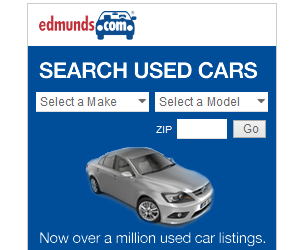What Happens to New Cars that dealers are unable to sell?
Valerie Raskovic
Jun 27, 2024
Cars that remain unsold on dealership lots for extended periods can become financial burdens for dealers. Each unsold vehicle represents a significant business investment tied up in inventory, accruing costs related to interest on loans taken to purchase the vehicles, insurance, and maintenance. Additionally, as these cars sit, they depreciate losing value over time, which can lead to further financial losses. The dealership also faces opportunity costs, as the space occupied by these unsold cars could be used for newer, more desirable models. Ultimately, long-term unsold vehicles can strain a dealership's cash flow and profitability. In addition, keeping unsold previous year model cars can make the dealers inventory appear outdated and may turn away potential customers.
To avoid these losses most dealers will employ the following tactics to sell slow moving and undesirable inventory:
- Discounts: The first and the most painless way car dealers get rid of slow-moving inventory is to offer discounts. On some vehicles that sit on the lot over 90 days the dealer will be more incentivized to sell the vehicle to free up resources and make room for newer models that may sell better offering huge discounts, in some cases even selling the vehicle at a loss. This often applies to undesirable models with color or trim combination that is less popular. Historically, burgundy color cars with light interiors have typically been among the slowest-selling color combinations. However, the popularity of specific features, options and colors can shift as trends evolve over time.
- Financing & Cashback Offers: To further entice the customer to make that crucial purchasing decision the dealer may add additional incentives on slow selling vehicles such as cashback and very favorable finance options. They may opt to reduce your down payment and go out of their way to find a bank to finance the loan. They will even go so far as to help with the terms of the loan, paying the bank to reduce the customers interest rate. It is not uncommon for the dealer to pay for a month or two of financing essentially giving the customer an additional discount.
- Selling vehicles to Fleet and Taxi companies: The third way the dealer may be able to get rid of some of their slow selling inventory is to sell the inventory in bulk to taxy and leasing companies giving them favorable pricing in exchange for large volume orders. Most dealers tend to reserve this option as a second to last resort as it does not leave them for much mark up per vehicle. Additionally, selling their vehicles for commercial use often exposes them to a higher risk of damage, increased maintenance and more frequent repairs under the manufacturer’s warranty. This leads to decrease in the vehicles future resale value making it less desirable to the next owner. To further exacerbate the issue, in cases where the vehicle must be repossessed due to nonpayment the dealer is often stuck with a vehicle which is below average condition with a history of commercial or taxy use permanently engraved on its vehicle history report further decreasing the vehicles desirability and value.
- In-House Offers: In-house offers for trade or sale are often reserved for specific companies and individuals, such as dealership employees and other dealers. Certain vehicles may sell better in one location than another, which is why dealerships often trade or sell inventory to other dealerships in different cities or states. Additionally, some dealerships may incentivize their employees to buy hard-to-sell vehicles by offering exclusive discounts and lease and financing incentives. In addition, to generating some needed revenue for the dealership this will help build brand awareness.
- Converting Inventory: In some cases, unsold vehicles may be repurposed to serve various roles within the dealership. The most common way dealerships do this is by turning them into company vehicles or customer loaner cars. These vehicles can be given to customers when they bring their cars in for service or used by employees as company vehicles. This approach allows the dealer to convert a depreciating asset into a write-off, freeing up equity to invest in better-selling inventory. However, this practice is limited as most dealerships cannot convert a large volume of cars due to lack of need and the financial impracticality of doing so for more than a handful of vehicles.
- Selling through a Wholesale Market: Dealers might opt to send their slow-selling vehicles to dealer-only auctions, often selling them at a very deep discount. This option can be somewhat problematic for dealers as it involves paying commissions and fees to the third-party auction houses and risking additional storage fees if the vehicles don't sell for the desired minimum reserve amount. This practice is often reserved as a last option as in many cases the cars sold on those dealer wholesale auctions are being sold at a loss. Most dealers would prefer selling a well maintained preowned or new vehicle through various retail options before turning to the wholesale options. The best deals are often found on vehicles that are scheduled to go to auction.
If your primary goal in buying a new car is to secure the best deal possible, consider targeting cars that have been on the dealership lot the longest. Dealerships are more likely to negotiate lower prices for these vehicles. Last year's inventory is usually the first to be discounted. So, if you're flexible about the vehicle's specifications, color, and not insisting on the newest model, you should have no problem getting a fantastic deal on a new vehicle.
Read more articles

